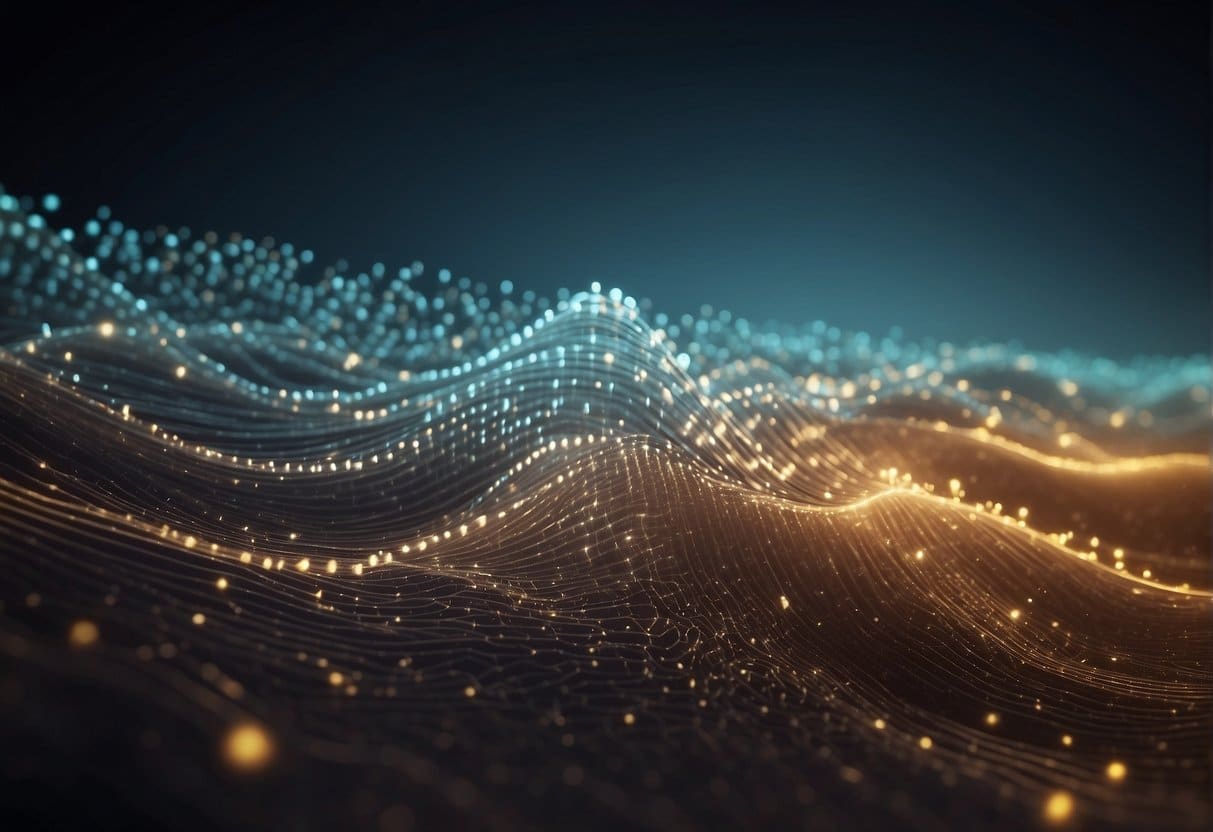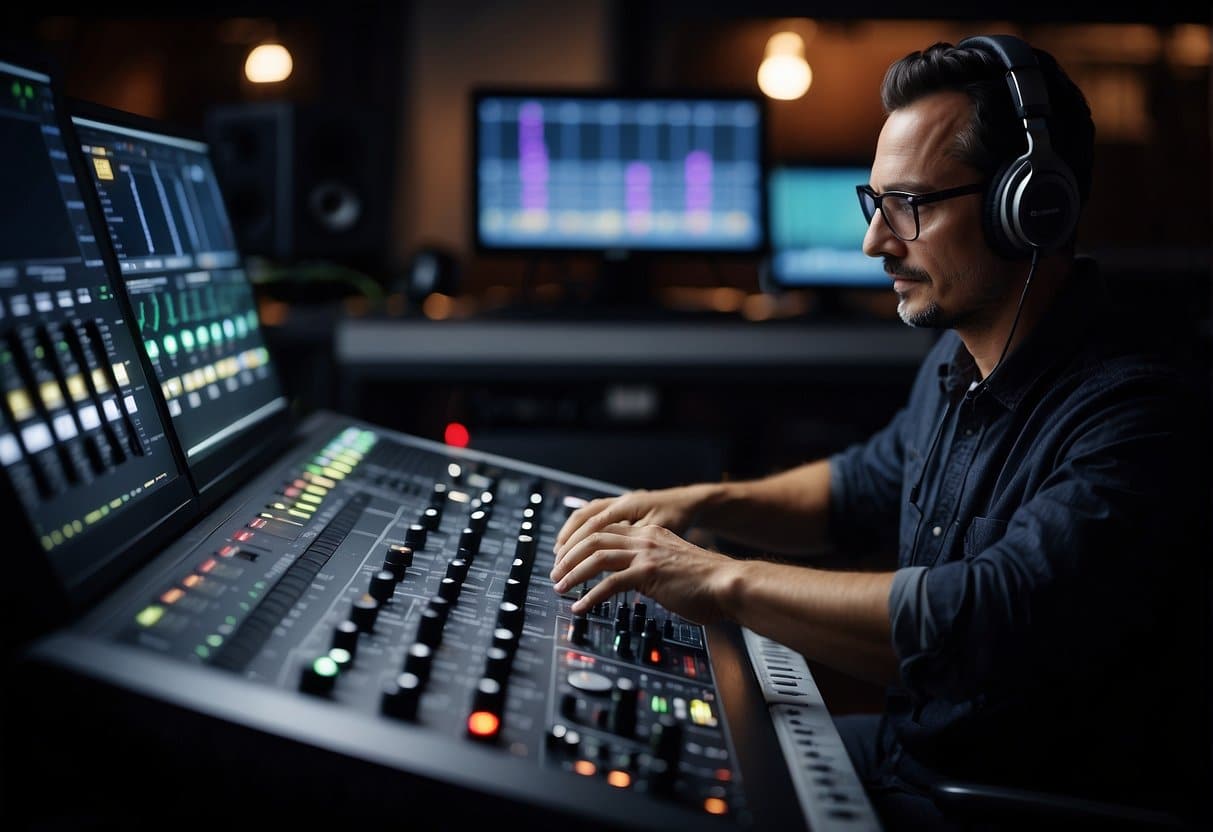Dithering in audio is an important process utilized to preserve audio quality during digital recording and playback. When an analog audio signal is converted into digital form, a bit of depth reduction occurs, which can introduce quantization errors that manifest as distortion. The application of dither adds a minute amount of noise to this digital signal, effectively masking the quantization errors and ensuring that the audio maintains its intended character and detail through the conversion process. This technique is central to the practices of audio mastering, allowing engineers to create the final version of a track with minimal distortion and maximal fidelity to the original recording.
 As audio moves through the stages of production, it’s vital to consider the bit depth—the number of bits used to represent each sample in the signal—because this affects the recording’s dynamic range and noise floor. By understanding and applying dithering, professionals in the field of audio production can help minimize the quality compromise that often arises during digital conversion and processing. The technical details of dithering become especially relevant as audio is prepared for its final format in mastering. The process ensures the listener is presented with the clearest and most accurate rendition of the audio as intended by the creators.
As audio moves through the stages of production, it’s vital to consider the bit depth—the number of bits used to represent each sample in the signal—because this affects the recording’s dynamic range and noise floor. By understanding and applying dithering, professionals in the field of audio production can help minimize the quality compromise that often arises during digital conversion and processing. The technical details of dithering become especially relevant as audio is prepared for its final format in mastering. The process ensures the listener is presented with the clearest and most accurate rendition of the audio as intended by the creators.
Successful audio production hinges on attention to detail, especially when preparing the final touches on a mix or master. Dithering in audio ensures the maintained sound integrity when reducing the bit depth of a digital audio file.
Dither in audio production is the deliberate addition of low-level noise to a digital signal during quantization, which minimizes the distortion that occurs when converting an audio file between different bit depths. By masking quantization error, dither preserves the audio quality of the signal, especially in the quiet parts of the audio where digital artifacts are more noticeable. Noise shaping is a related process that further improves the performance of dithering by adjusting the spectral characteristics of the added noise to make it even less perceptible.
Different algorithms employ various kinds of noise, such as white noise, which is even across all frequencies, and triangular or rectangular distributions. Triangular noise, which tends to be more focused and less spread across frequencies than white noise, is often preferred as it is less audible to the human ear after dithering. Additionally, some algorithms may use higher levels of random noise to mask quantization errors more effectively.
Bit depth is pivotal in reproducing audio files, with 24-bit resolution being typical in the industry for quality recording and mixing. The higher the bit depth, the greater the potential dynamic range of the recording, meaning a wider range of soft and loud sounds can be captured. During the final stages of production, especially when reducing bit depth to the ubiquitous 16-bit CD quality, dither helps to maintain the resolution quality as closely as possible to the original sample rate and resolution of the audio file.
By understanding and applying these elements conscientiously within the realm of software and hardware tools available to them, audio engineers and music producers can significantly enhance the final deliverables of their audio projects.
In the realm of digital audio, dithering plays a pivotal role in preserving audio quality. It involves the deliberate addition of noise to minimize distortion during conversion processes.
Quantization error occurs when an analog signal is converted to a digital audio file; it’s an inherent discrepancy between the original signal and its digital representation. Quantization noise is the audible result of these errors, manifesting as a harmonic distortion degrading the audio resolution. Audio dithering combats this by adding low-level noise to the signal. This technique effectively masks the quantization noise by raising the noise floor just enough to make the error less perceptible, turning structured quantization distortion into random, less offensive noise.
The analog-to-digital conversion (ADC) process involves sampling an analog signal at discrete intervals to create a digital replica. However, because the digital format has a limited number of bits for representing the signal, some detail can be lost—this loss is known as quantization distortion. To preserve audio quality, dither is introduced when converting an analog signal. This intentionally adds low-level noise to the least significant bit of the digital audio resolution, smoothing out quantization errors and minimizing harmonic distortion.
Upon playback, a digital-to-analog converter (DAC) reconstructs the digital signal into an analog form. The quantization noise introduced during ADC can produce a harsh, unpleasant sound without proper dithering. Noise shaping is a technique used in conjunction with dithering, applying a frequency-dependent emphasis to the added noise. This process intelligently shifts the noise to less audible frequencies, maintaining the integrity and character of the original audio content. Noise shaping takes the concept of dithering further, refining the noise profile to further ensure that any distortion remains below the human auditory threshold.
 Dithering is crucial in the mastering process to maintain audio quality during the transition to lower bit depths often required for distribution formats like CDs and MP3s.
Dithering is crucial in the mastering process to maintain audio quality during the transition to lower bit depths often required for distribution formats like CDs and MP3s.
When mastering audio, engineers aim to preserve the optimal dynamic range while preparing tracks for commercial release. The transition from higher bit depths used in studio recordings to the 16-bit format standard for CDs introduces the potential for quantization errors—audible distortions that can make a sound recording seem flat or lifeless. By implementing dithering, a low-level noise is strategically added to fill in the ‘gaps’ between the discrete values of digital audio. This addition effectively masks quantization errors, enhancing the perceptual depth and preserving the nuances in the audio, particularly in the quieter passages where distortion is most likely to be noticed.
Dithering is not a one-size-fits-all process; its application depends on the final medium. For example, a track destined for a CD requires dithering to maintain quality when converting down from high-resolution audio files to the CD’s 16-bit format. In contrast, a file meant for a streaming service might undergo different dithering treatment considering the application of compression codecs like AAC or MP3, which can affect the audio differently. Furthermore, when downsampling for streaming, engineers must be mindful of how dithering interacts with other mastering processes, such as limiting the dynamic range to avoid clipping and managing headroom to ensure the loudest peaks do not cause distortion. During the mastering process, additional attention is paid to fade-outs and bounce points to ensure transitions remain smooth after dithering is applied.
In all scenarios, dithering serves as a final adjustment, safeguarding against the loss of audio quality and ensuring that listeners enjoy a richer, more detailed listening experience regardless of the playback system.
When incorporating dithering into the audio production process, one must consider the choice of algorithm the impact on listener experience, and address common errors and misconceptions.
Different dithering algorithms, such as POW-r, can yield various effects on the final audio. Selecting an algorithm is crucial as it should complement the project’s specific needs while maintaining the integrity of amplitude values within the digital audio workstation (DAW). For instance, a POW-r algorithm may be preferred for its ability to preserve audio quality across different listening environments.
Dithering subtly influences the listening experience by mitigating quantization errors. These errors can manifest as truncation distortion, which occurs when reducing bit depth in the absence of dither. By properly applying dither, one can ensure smoother fades and avoid the introduction of rounding errors during the mixing and mastering stages, thereby ensuring higher fidelity.
A prevalent misconception is that dithering can significantly alter the perceived amplitude or color of a recording. However, dithering operates at a level usually imperceptible to the ear. Its primary role is to maintain audio quality during the analog-to-digital conversion by addressing rounding errors and preventing distortion. Additionally, one should not use dither when bypassing a limiter or during intermediate stages of recording and mixing, as this could compound noise unnecessarily. Dither should be applied once, as the final step before truncating the audio bit depth.
In the realm of audio processing, dithering plays a critical role in preserving audio fidelity during bit-depth reduction. This section addresses common inquiries regarding the nuances of audio dithering and its practical application in audio mastering.
Dithering introduces low-level noise to an audio signal to mask quantization errors that can occur during bit-depth reduction. This process ensures the audio quality is maintained when the audio file is converted to a lower bit depth, such as during the final mastering stages.
An example of audio dithering would be adding a subtle noise to a 24-bit audio file as it is rendered down to a 16-bit file for CD quality. This noise prevents audible distortion that would otherwise occur due to the truncation of audio data.
White noise in dithering is a random, constant noise added across all frequencies, while noise shaping is a more sophisticated technique that applies noise more heavily in frequency ranges less audible to human ears, preserving audio quality more effectively.
Dithering should be applied during the audio production process when a file is being converted to a lower bit depth. It’s a crucial step, particularly in the final mastering phase before distribution, such as when creating 16-bit files for a CD from a 24- or 32-bit mix.
Dithering algorithms improve digital audio by minimizing quantization noise and errors. By adding low-level noise, these algorithms prevent the harshness and digital artifacts that can arise when an audio file’s bit depth is reduced, improving the perceived audio quality.
It is unnecessary to dither audio before converting to MP3 or AAC formats, as encoding to these compressed formats doesn’t benefit from dithering like reducing bit depth for CD-quality audio does.